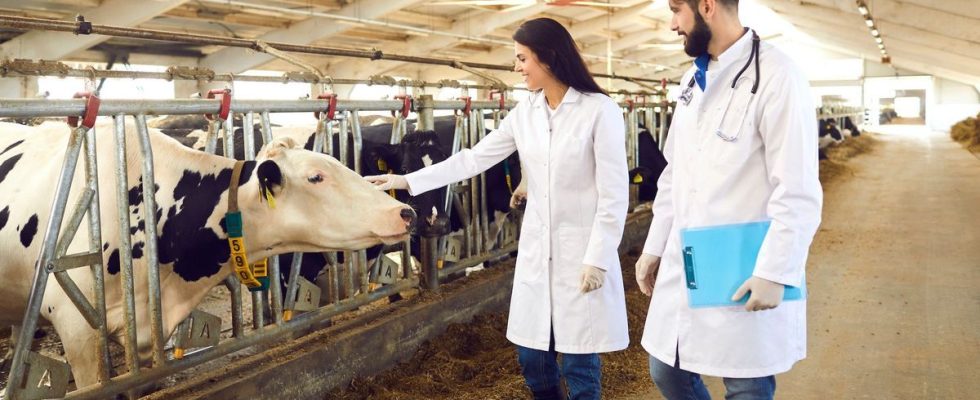Published on
Updated
Reading 2 min.
in collaboration with
Dr Gérald Kierzek (Medical Director)
As the number of species affected by avian flu, such as dairy cows, continues to grow around the world, the World Health Organization is concerned about possible wider transmission to humans.
Surveillance of the H5N1 virus has suddenly gone up a notch. While just 10 days ago, the World Health Organization judged the public health risk “low for the general population” and the risk of infection “low to moderate for occupationally exposed people”the tone suddenly changed this Tuesday, the WHO making public its deep concern on the subject.
A virus that is spreading to more and more mammals
What happened to cause such a level of alarm? Several things.
On the one hand, a large national investigation in the United States revealed particles of the virus in pasteurized cow’s milk on Tuesday.from affected animals, in the processing system and on the shelves“, announced the United States Medicines Agency (FDA) in a press release, even if pasteurization is supposed to eliminate pathogens.
On the other hand, an outbreak of highly pathogenic avian influenza A (H5N1) spread in the country’s dairy herds and even infected a person in early April, who presented mild symptoms. In other words, the number of affected mammals continues to grow, more and more rapidly, “even though cows have been perceived until now as the mammals least susceptible to avian flu viruses”notes Gilles Salvat, research director of the National Agency for Food, Environmental and Occupational Health Safety, in the world.
Humans seen as next in line?
On Thursday April 18, Jeremy Farrar, chief scientist of the World Health Organization (WHO), expressed his “huge concern” about the increasing spread of the H5N1 strain of avian flu to new species, including humans.
According to him, the fear is that the H5N1 virus, which in people contaminated by their contact with infected animals has demonstrated “an extraordinarily high mortality rate (around 52%)”adapts to become capable of transmission from human to human, particularly through species such as pigs.
Remember, however, that for the moment, cases of animal-to-human transmission are very rare and there is no evidence of human-to-human transmission of H5N1.
“Anticipate without panicking” for other scientists
Faced with the threat, however, many scientists are calling for us to remain reasonable. “The scenario of transmission of the H5N1 virus to humans has worried us for more than 25 years. recalls Arnaud Fontanet, of the Pasteur Institute, in Paris, in The world. “The scenario never happened, but the simple fact that the circulation of the virus is intensifying is a source of concern.”
Dr. Gérald Kierzek, medical director of Doctissimo, also wants to be reassuring: “Of course, the risk is human contamination. But there is no need to panic, for the moment we are talking about people in contact with animals. The risk would indeed be that transmission accelerates in pigs, mammals quite similar to humans. But the good news to also keep in mind is that, even then, vaccines are already in the pipeline!”
Regardless, all experts and doctors agree on one point: surveillance must be strengthened. “In France, the level of surveillance was strengthened last year, particularly among poultry breeders. recalled Brigitte Autran, president of Covars in her last communication.
